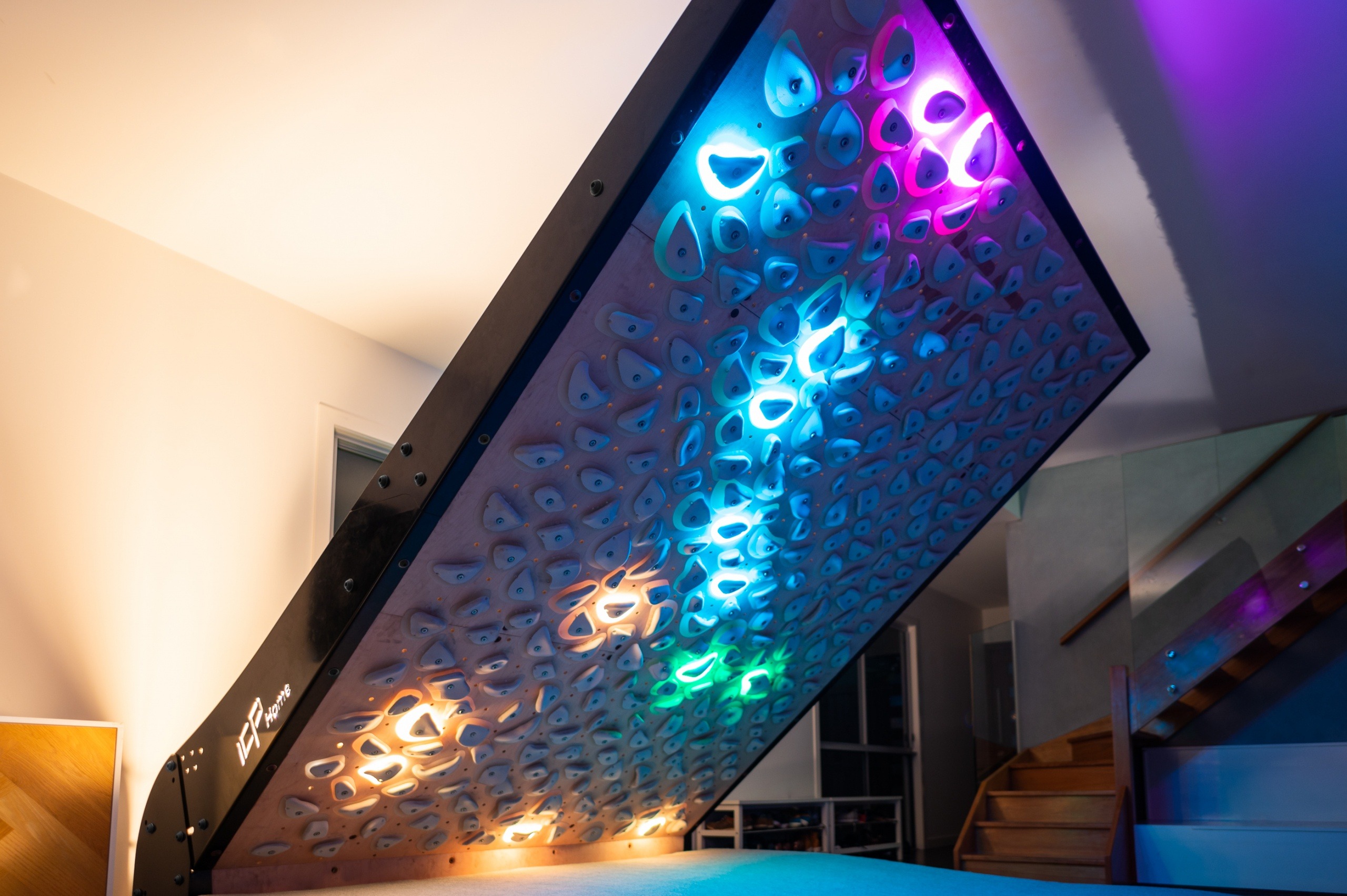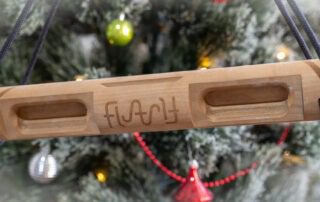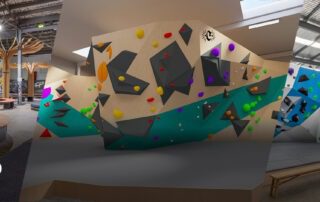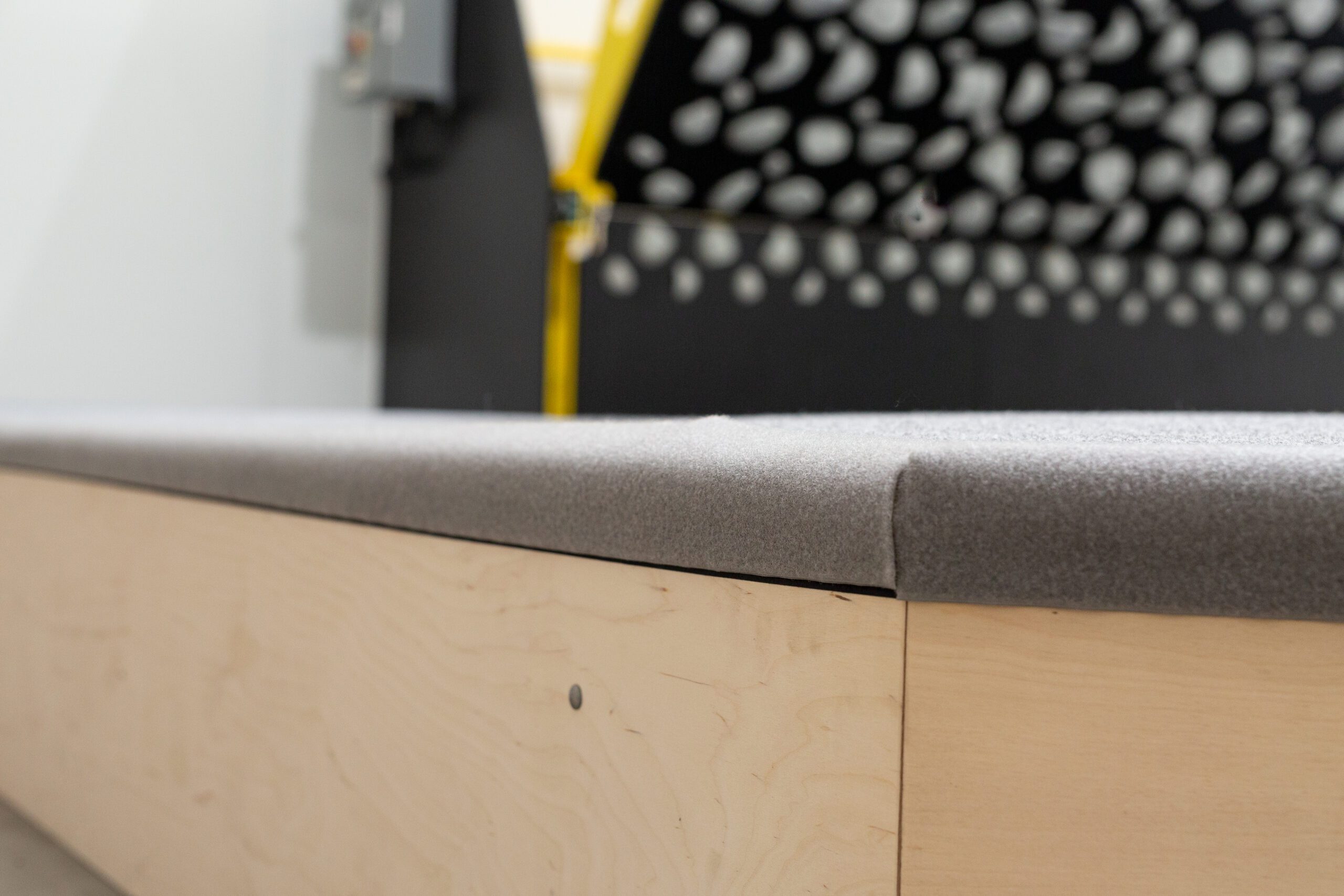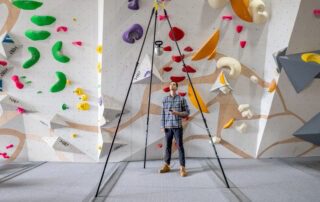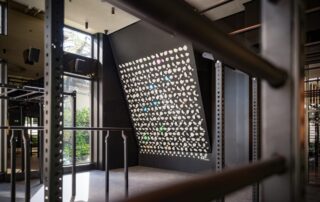We had a chat with Kilter’s very own Jackie Hueftle about all things Kilter Board. So we asked “why get a Kilter Board?”
Each board comes in several size options that share problems, so a 12×12′ Original contains all the problems found on the 8×12′ Original and 7×10′ Original. This means climbers can share problems even if they have different sized boards. Even the smallest size of 7×10′ packs in a lot of value. The above image shows the awesome Kilter Board Home Wall 7×10′ on the stylish ICP Home.
Different Board Layouts
The Kilter Board comes in multiple size variations of the Original and Homewall layouts. Notably, the Homewall layout has two layouts – Mainline and Auxiliary – that are overlaid so you can choose what density you want your wall to have. The Fullride contains both Mainline and Auxiliary layouts for the densest wall, giving you a ton of options even if you only have a small space to work with. The layouts also complement each other so if you have enough space you can get the largest version of both – 12×12 Original Layout and 10×12 Fullride Homewall – and have access to more than 63,000 problems.

Global Connectivity
The Kilter Board provides a world-wide network of users to climb with. The integrated beta videos let people watch videos and post their own. Users include pro climbers like Jimmy Webb and Keenan Takahashi, World Cup competitors, and more! This means you can try climbs that people like Alex Megos or Sean McColl have set.
Too Many Problems? Not A Problem
With over 58k problems on the 12×12 Kilter Board Original and over 5k on the 10×12 Kilter Board Homewall Fullride, you will never run out of routes to climb. This can take some heat off your route setting crew as your strong kids can still find hard Kilter Board climbs even if they’ve climbed out the newest sets.
We continue our discussion with Jackie from Kilter in our next post. Check back soon…
